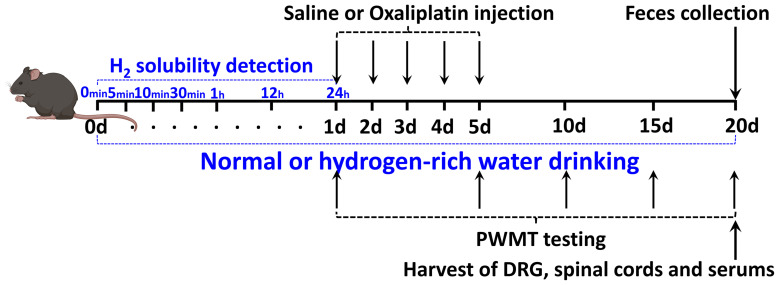Figure 1.
Experimental design. WT female C57BL/6J mice aged 8 weeks and weighing 20–25 g were subjected to saline or oxaliplatin injection. Hydrogen-rich or normal drinking water was used for the entire experiment. One day before the OXA or saline injection (on day 0), the solubility of H2 in normal or hydrogen-rich water was detected at 0, 5, 10 and 30 min, and 1, 12 and 24 h after blowing the hydrogen gas into the drinking water. PWMT was carried out 1, 5, 10, 15 and 20 days after the saline or oxaliplatin injection. The feces of different groups were obtained for tests following PWMT test. The DRG and spinal cords of L4-6 segments and serum of different groups were obtained for tests following feces collection on day 20. Different groups of DRG, spinal cords and serum were used for ELISA, and DRG and spinal cords were used for Western blot analysis, as mentioned in the Materials and Methods section.
Abbreviations: WT, wild-type; PWMT, paw withdrawal mechanical threshold; DRG, dorsal root ganglia.

